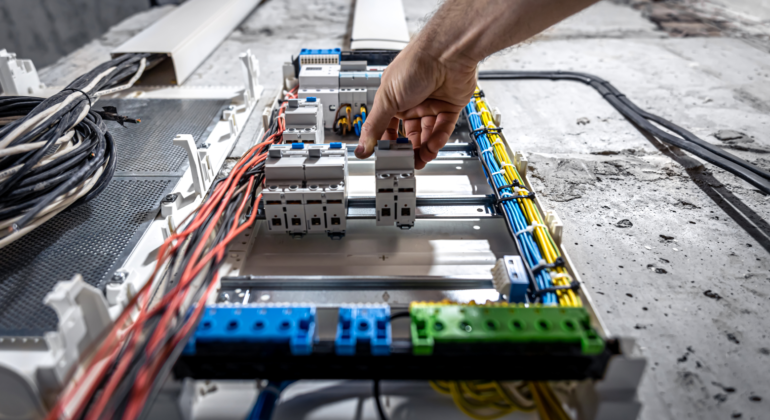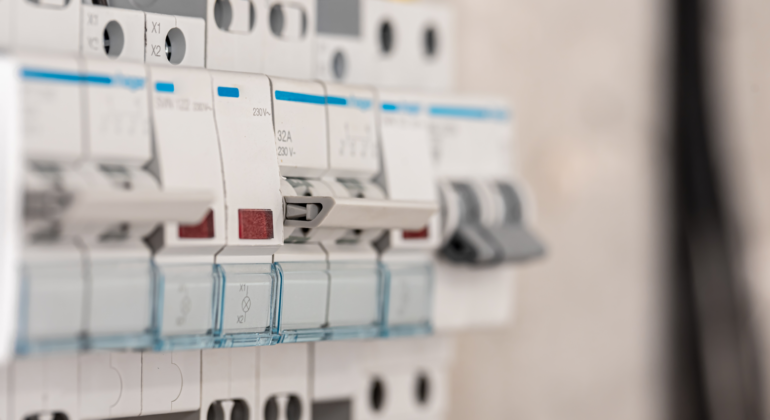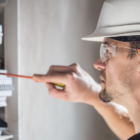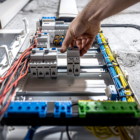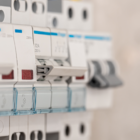Electrical Control Panels – Repair or Replace
Like any other product, Electrical Control Panels will break down over time, but the question is whether your company should repair, or replace these units when situations arise. Said question is a bit more complex to answer than it might appear on paper.
Therefore, it’s wise to take a moment and understand the complexities surrounding this question, including the nature of Electrical Control Panels as they relate to various industries. This will allow you, the reader, to make an informed decision as to whether replacement or repair is the go-to solution.
Warning Signs
Before the scenario of repair vs. replace even comes to mind, there needs to be a reason to do so. Production plants and factories will often display any number of warning signs – or “warning shots” as they are commonly referred to – that signal a potential problem with an Electrical Control Panel. These can include the following:
– Power surges & blackouts
– Acrid or abnormal smells
– Warm enclosures
– Corroded metal
If any of the above are present, it’s time to perform inspections on Electrical Control Panels to make sure they aren’t the culprit. If they are, then you must either repair, or replace. It’s good practice to be proactive in this area, and refrain from waiting for a problem to arise. Schedule regular inspections of all Electrical Control Panels to be sure they’re operating correctly, otherwise it could lead to a shutdown and lost time/revenue.
Common Issues
There are many issues that tend to affect Electrical Control Panels, most of which are avoidable. A large part of these issues stem from factories and production facilities that follow their own standards and practices. In theory, there’s nothing wrong with this approach, but it can lead to problems when it comes to regular maintenance and upkeep. This can trickle down to Electrical Control Panels as well.
Another issue revolves around ignoring, or refusal to adhere to electrical code standards, which can lead to issues like fire hazards. Older Electrical Control Panels often include components which are worn out and no longer reliable, which can lead to faults that make it harder to fix.
Also, bear in mind the positioning of Electrical Control Panels to “hot zones” that can increase heat load, leading to greater chance of a problem. Industrial environments are notorious for these, which means strategic placement of Electrical Control Panels is highly recommended. This can help offset labor costs by reducing the placement of panels at inaccessible or hard-to-reach locations.
Should You Repair or Replace
With details in mind, the obvious question is whether to repair, or replace an Electrical Control Panel. This is largely a case-by-case issue, and depends a lot on the age of the panels in question. Older equipment may still function well, and can be repaired, but is that really the best solution? Oftentimes, it’s wise to view the breakdown of older Electrical Control Panels as a justification to replace them with updated, far more efficient new models.
Newer Electrical Control Panels have more advanced components, better designs and greater reliability through decades of continuous refinement. They’re also more energy-efficient, which can cut down on costs, and they come packed with a greater number of enhanced safety features. And of course, newer Electrical Control Panels come with smaller components such as motors, which do the same (or better) job despite their size.
This leads to more profitability and less downtime in the future. If your Electrical Control Panels are aging, it’s good practice to have them replaced over time, but a faulty unit is a no-brainer reason to upgrade. Many companies view technological upgrades as a painful issue, but the long-term pros far outweigh the initial costs.
Rule of thumb – newer Electrical Control Panels should be repaired, depending on the severity of the issue, while older panels should be retired to make way for more efficient and technologically advanced successors. Following this lead will cut costs and keep your operation running smoothly, every single time.
Conclusion
If your company is in need of brand new Electrical Control Panels with the latest technological advancements, we’d like to hear from you. We take on projects both great and small, and we’re on standby to help out, even in an emergency. Contact us today for a quote.

